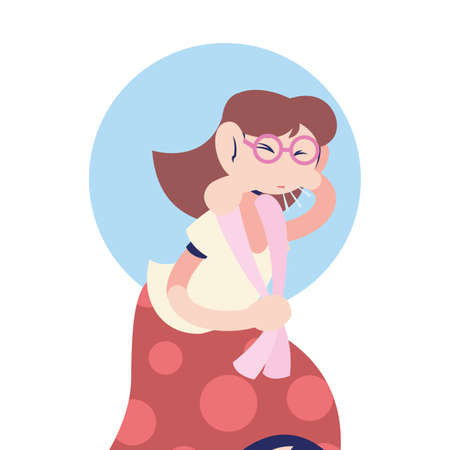1. Recognizing Allergy Symptoms in Infants
Allergies in infants can be challenging to identify, as their symptoms often resemble common illnesses or mild reactions to new foods and environments. However, understanding the key signs of allergic reactions can help parents determine when to seek medical advice.
Common Allergy Symptoms in Babies
Infants can experience a variety of allergic reactions, affecting different parts of their bodies. Below are some of the most common allergy symptoms:
| Type of Reaction | Symptoms |
|---|---|
| Skin Reactions | Eczema (red, itchy patches), hives, swelling, or rashes appearing after contact with allergens. |
| Digestive Issues | Vomiting, diarrhea, excessive gas, or blood in stool, often linked to food allergies. |
| Respiratory Symptoms | Coughing, wheezing, nasal congestion, runny nose, or difficulty breathing. |
Differentiating Allergies from Common Illnesses
It’s easy to mistake allergy symptoms for a cold or minor digestive issues. However, allergies often present consistent patterns—symptoms may appear shortly after exposure to a specific food, pet, or environmental factor and persist as long as the allergen remains present.
Signs That May Indicate an Allergy Rather Than a Cold:
- No Fever: Unlike colds, allergies do not cause fever.
- Persistent Symptoms: Allergic reactions last as long as the child is exposed to the allergen.
- Sneezing Without Other Signs of Illness: Frequent sneezing without fever or body aches may indicate an allergy.
- A Family History of Allergies: If parents or siblings have allergies, the baby may be more prone to developing them.
When to See an Allergist
If your baby frequently develops skin rashes, digestive problems, or respiratory issues that don’t improve with home care, it may be time to consult an allergist. An allergist can perform tests to determine potential triggers and recommend appropriate treatments to help manage symptoms effectively.
2. Common Allergens That Affect Infants
Allergies can develop early in life, and many infants experience reactions to common allergens found in food, the environment, or seasonal changes. Understanding these triggers can help parents recognize symptoms and seek proper care from an allergist when needed.
Food Allergies
Food allergies are among the most common causes of allergic reactions in infants. Some babies may react to certain proteins in their diet, leading to symptoms like hives, digestive issues, or breathing difficulties. Below are some of the most frequent food allergens for infants:
| Allergen | Common Symptoms |
|---|---|
| Dairy (Milk) | Rash, vomiting, diarrhea, colic-like symptoms |
| Eggs | Skin rashes, swelling, difficulty breathing |
| Peanuts | Anaphylaxis, itching, swelling of lips or face |
Environmental Triggers
The home environment can also contribute to allergic reactions in infants. Common indoor allergens include dust mites and pet dander. These allergens may cause respiratory symptoms such as sneezing, coughing, or congestion.
Dust Mites
Tiny dust mites thrive in bedding, carpets, and upholstered furniture. They can trigger allergy symptoms like runny nose, watery eyes, and wheezing.
Pet Dander
Cats and dogs shed tiny flakes of skin known as dander. Infants sensitive to pet allergens may experience stuffy noses, rashes, or even asthma-like symptoms.
Seasonal Allergies
Pollen from trees, grass, and weeds can cause seasonal allergies in some infants. This type of allergy is more common in older children but can still affect babies with sensitive immune systems.
Pollen Exposure
If your baby experiences sneezing, itchy eyes, or nasal congestion at certain times of the year, pollen could be the culprit. Keeping windows closed and using air purifiers may help reduce exposure.

3. When to Schedule an Appointment with an Allergist
As a parent, it can be concerning to see your baby experiencing symptoms that might indicate an allergy. While some mild reactions may not require immediate medical attention, there are certain signs that suggest it’s time to see an allergist for further testing and guidance.
Signs Your Baby Might Need Allergy Testing
If your baby is showing persistent or severe allergic reactions, consulting an allergist can help identify triggers and develop a management plan. Here are some key indicators that your little one may need allergy testing:
| Signs of Allergies | Description |
|---|---|
| Frequent Skin Reactions | Red, itchy rashes, eczema, or hives that keep coming back despite treatment. |
| Severe Food Reactions | Vomiting, diarrhea, swelling of the lips or face, or trouble breathing after eating certain foods. |
| Chronic Nasal Congestion | A stuffy or runny nose that lasts for weeks without improvement, especially if it happens year-round. |
| Wheezing or Breathing Issues | Coughing, wheezing, or shortness of breath that doesn’t improve with common treatments. |
| Family History of Allergies | If parents or siblings have allergies, asthma, or eczema, your baby may be at higher risk. |
The Importance of Early Testing
If your baby is displaying any of these signs, scheduling an appointment with an allergist sooner rather than later can help prevent more serious reactions in the future. Early testing allows you to pinpoint allergens and take steps to manage symptoms effectively. This is especially important if your child has had severe allergic reactions, such as difficulty breathing or anaphylaxis.
What to Expect During the Appointment
An allergist will review your baby’s medical history, ask about symptoms, and possibly recommend tests such as skin prick testing or blood tests. These tests can help determine specific allergies and guide treatment options.
Next Steps After Diagnosis
If allergies are confirmed, the allergist will provide recommendations on how to avoid triggers and manage symptoms. This could include dietary changes, medication options, or strategies to reduce exposure to environmental allergens like dust or pet dander.
4. Types of Allergy Tests for Infants
If you suspect that your baby has allergies, an allergist can help determine the cause through various diagnostic tests. Identifying allergies early can help prevent discomfort and potential health risks. Here are some common allergy tests used for infants.
Skin Prick Test
The skin prick test is one of the most common methods to check for allergic reactions. During this test, a small amount of allergen is placed on your baby’s skin, usually on the forearm or back. A tiny, sterile needle gently pricks the skin, allowing the allergen to enter just beneath the surface. If your baby is allergic, a small red bump may appear within 15-20 minutes.
Pros and Cons of Skin Prick Test
| Pros | Cons |
|---|---|
| Quick results (within minutes) | Mild discomfort from skin pricking |
| Can test multiple allergens at once | Not suitable for babies with severe eczema or sensitive skin |
| Highly accurate for environmental and food allergies | Poor accuracy for certain delayed allergic reactions |
Blood Test (Specific IgE Test)
A blood test measures the levels of allergy-related antibodies (IgE) in your baby’s blood. This test is useful if your baby has a skin condition that makes the skin prick test difficult or if there’s a risk of a severe allergic reaction.
Pros and Cons of Blood Test
| Pros | Cons |
|---|---|
| No skin irritation or discomfort | Takes longer to get results (several days) |
| Safer for babies with severe allergies | May not always be as accurate as skin testing |
| A single blood draw can test for multiple allergens | A needle is required, which may be stressful for infants |
Elimination Diet
An elimination diet involves removing suspected allergens from your babys diet and then slowly reintroducing them while monitoring symptoms. This method is commonly used for food allergies and is often done under medical supervision.
Steps in an Elimination Diet
- Identify possible allergens: Common triggers include dairy, eggs, soy, wheat, nuts, and fish.
- Avoid suspected foods: Remove these foods from your baby’s diet for 2-4 weeks.
- Observe symptoms: Monitor changes in skin rashes, digestion, breathing issues, or other allergic reactions.
- Reintroduce foods one at a time: Add each food back individually while watching for symptoms.
- If symptoms return: Stop feeding the suspected allergen and consult an allergist.
Pros and Cons of Elimination Diet
| Pros | Cons |
|---|---|
| No needles or medical procedures needed | Takes time to identify specific allergens |
| Avoids unnecessary medications or treatments | Difficult to manage if your baby has multiple allergies |
| A natural way to observe food sensitivities | Poor accuracy without proper medical supervision |
Selecting the Right Allergy Test for Your Baby
The best allergy test depends on your babys symptoms, medical history, and age. Your pediatrician or allergist can help determine which method is most appropriate. In some cases, a combination of tests may be necessary to get an accurate diagnosis.
5. Treatment Options and Managing Infant Allergies
When your baby is diagnosed with allergies, managing their symptoms becomes a top priority. Treatment options can vary depending on the severity of the allergy, but they often involve dietary adjustments, medication, and lifestyle changes to minimize allergen exposure at home.
Dietary Adjustments
If your baby has food allergies, modifying their diet is essential. Your pediatrician or allergist may recommend eliminating certain foods that trigger allergic reactions. For breastfeeding mothers, this could also mean adjusting your own diet to avoid passing allergens through breast milk.
Common Food Allergens in Infants
| Allergen | Common Sources | Alternative Options |
|---|---|---|
| Dairy | Cows milk, cheese, yogurt | Dairy-free formula, almond or oat milk (for older infants) |
| Eggs | Baked goods, scrambled eggs | Aquafaba (chickpea water), flaxseed egg substitute |
| Nuts | Peanut butter, almond-based snacks | Sunflower seed butter, soy-based alternatives |
| Soy | Soy formula, tofu, soy-based baby food | Dairy-free formulas without soy, coconut-based products |
| Wheat | Bread, pasta, cereal | Gluten-free grains like rice or quinoa |
Medication for Infant Allergies
If dietary changes alone aren’t enough to manage symptoms, your doctor may suggest medications. Antihistamines are sometimes prescribed for mild allergic reactions, while more severe cases may require an epinephrine auto-injector if there’s a risk of anaphylaxis.
Common Allergy Medications for Infants
- Antihistamines: Used to relieve mild allergy symptoms such as itching or hives.
- Epinephrine: Prescribed for severe allergic reactions (anaphylaxis); available as an auto-injector.
- Corticosteroids: Sometimes recommended for skin-related allergies like eczema.
Lifestyle Changes to Reduce Allergen Exposure at Home
Avoiding allergens in your babys environment can help minimize reactions. Simple changes in your home can make a big difference in reducing exposure.
Tips for an Allergy-Friendly Home
- Create a dust-free space: Use hypoallergenic bedding and clean frequently to reduce dust mites.
- Avoid pet dander: If pets are a trigger, keep them out of the nursery and wash them regularly.
- Mold prevention: Use a dehumidifier in damp areas to prevent mold growth.
- Avoid strong fragrances: Use fragrance-free detergents and cleaning products to reduce irritation.
- Pollen control: Keep windows closed during high pollen seasons and use air purifiers.
Working with an Allergist for Long-Term Management
Your child’s allergist will help develop a personalized plan based on their specific allergies. Regular check-ups can ensure that treatments are working effectively and that any new allergies are identified early.


